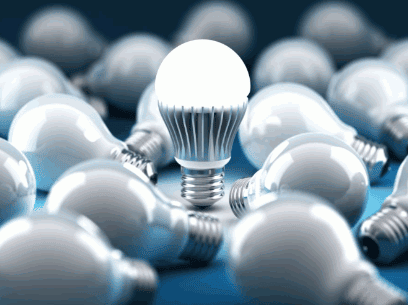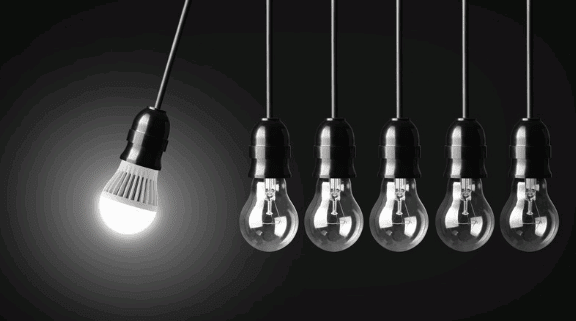
LED lighting has become increasingly popular in recent years due to its numerous benefits.
From energy efficiency to cost savings, LED lighting offers a wide range of advantages for both residential and commercial spaces.
We will explore what LED lighting is, how it works, and the benefits it provides, such as long lifespan and environmental friendliness.
Discover the different types of LED lighting available and get tips on how to choose the right LED lighting for your needs.
If you are considering upgrading your lighting system, this article will help you make an informed decision.

Table of Contents
LED lighting refers to the technology that uses Light Emitting Diodes (LEDs) to produce light. These light sources are becoming increasingly popular due to their energy efficiency and versatility in various applications.
LEDs work on the principle of electroluminescence, where electricity passes through a semiconductor material to produce light. Unlike traditional bulbs, LEDs do not rely on heating a filament to produce light, making them much more energy-efficient. They also have a longer lifespan, emit less heat, and are more durable. This technology allows LEDs to be used in a wide range of lighting products, including bulbs, strips, panels, fixtures, and lamps, catering to different needs and aesthetics.
Gain insights: How To Install LED Recessed Lighting In Existing Light Fixture
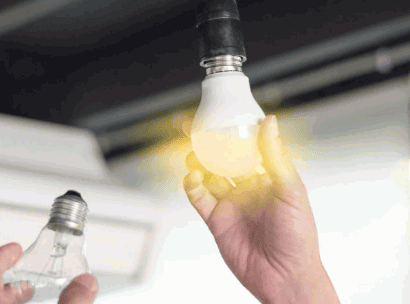
LED lighting works by passing an electric current through a semiconductor diode, which emits light energy.
Unlike traditional incandescent bulbs that rely on a heated filament to produce light, LEDs generate illumination through a process called electroluminescence. Within the LED diode, when electrons combine with electron holes, they release energy in the form of photons. This phenomenon is what enables LEDs to emit light efficiently without the need for a filament. LEDs are highly efficient because they produce very little heat in comparison to incandescent bulbs, resulting in less energy wastage.
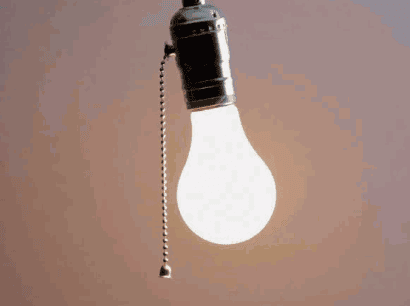
LED lighting offers a multitude of benefits including energy efficiency, long lifespan, significant cost savings, environmental friendliness, and exceptional durability. Switching to LEDs can lead to a reduction in energy consumption and maintenance costs.
LED lighting stands out for its unparalleled energy efficiency, consuming significantly less power compared to traditional incandescent, fluorescent, and halogen bulbs. The use of LEDs contributes to reducing overall energy consumption and CO2 emissions.
By utilising LED lights, households and businesses can experience substantial energy savings over time. Not only do LEDs use less power, but they also emit less heat during operation, making them a safer and more efficient lighting choice. This reduction in heat generation not only saves energy consumption further but also minimises the need for extra cooling in indoor spaces. Thus, the widespread adoption of LED lighting plays a crucial role in promoting energy conservation and advancing environmental sustainability.
LEDs have a remarkably long lifespan, lasting up to 25 times longer than incandescent bulbs and significantly longer than fluorescent and halogen lighting.
The extended lifespan of LEDs reduces the frequency of replacements and maintenance costs. This durability is further enhanced by their resistance to temperature fluctuations, making them ideal for various environments. LED lights are not only long-lasting but also highly energy-efficient, helping users save on electricity bills in the long run. Due to their longevity, LEDs are increasingly being used in commercial and residential settings, providing both economic and environmental benefits. With fewer replacements needed, consumers can enjoy hassle-free lighting solutions that last for years.
LED lighting offers substantial cost savings over time due to its energy efficiency and long lifespan. Although LEDs may have a higher upfront cost, the reduced energy bills and maintenance expenses make them a cost-effective lighting solution in the long term.
The longevity of LED bulbs translates to fewer replacements, lowering overall expenses for both businesses and households. The return on investment for LED lighting is impressive, as the initial investment is typically recouped through energy savings within a relatively short period. This not only benefits the financial bottom line but also contributes to environmental sustainability by reducing energy consumption. In addition, the reduced heat output of LEDs compared to traditional lighting options can lead to cost savings on cooling systems, further enhancing the financial advantages of incorporating LED lighting.
LED lighting is environmentally friendly, as LEDs consume less energy and contain no harmful substances like mercury found in fluorescent bulbs. Opting for LEDs contributes to lower CO2 emissions and reduces the environmental impact of lighting.
Another eco-friendly aspect of LED lighting is the recyclability of LEDs. Unlike traditional lighting sources that often end up in landfills, LEDs can be easily recycled. The materials used in LEDs, such as aluminium and semiconductors, are valuable and can be repurposed for other products. This helps reduce waste and conserves resources, further minimising the environmental footprint associated with lighting.
LEDs are known for their durability and reliability, making them ideal for various applications and environments. The robust construction of LED light fittings ensures longevity and consistent performance even in inclement weather conditions.
LED lighting is particularly resistant to knocks and vibrations due to its solid-state construction, unlike delicate traditional lighting options. This quality makes them a popular choice for outdoor settings where weather elements and rough handling are common. The ability of LEDs to operate efficiently across a wide range of temperatures further highlights their adaptability for industrial applications.
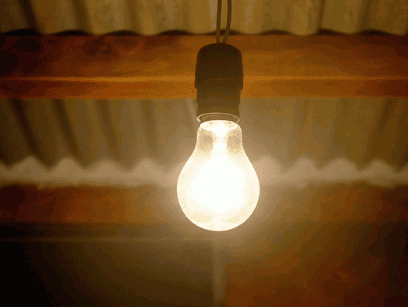
LED lighting comes in various forms, including LED light bulbs, strips, panels, tubes, and floodlights, each designed for specific lighting needs and applications. These diverse options offer flexibility and customisation in lighting setups.
LED light bulbs are commonly used in homes and offices for general lighting, providing bright and energy-efficient illumination.
LED strips are versatile and popular for accent lighting, allowing for creative installations in spaces like bars or under cabinets.
LED panels are excellent for even and diffused lighting, often used in commercial settings or photography studios due to their consistent output.
LED tubes are ideal for replacing fluorescent tubes, offering a longer lifespan and better energy efficiency.
LED floodlights are perfect for outdoor spaces, providing powerful and focused illumination for security or highlighting landscaping features.
LED light bulbs are a popular choice for residential and commercial lighting, offering energy efficiency, brightness, and a wide colour range. They are suitable replacements for incandescent, fluorescent, and halogen bulbs, providing superior illumination and directional lighting.
The energy-saving capabilities of LED light bulbs make them an environmentally friendly option, helping to reduce electricity consumption and lower utility costs. The colour options available with LED bulbs range from warm white to cool daylight, allowing for customizable lighting to suit various environments and moods.
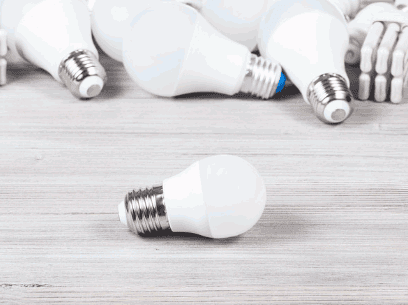
LED strips are flexible lighting solutions that can be easily installed in various settings such as under cupboards, shelves, or in decorative displays. These versatile light strips offer customisable illumination in different colours and brightness levels.
The applications of LED light strips are truly endless. They are commonly used in interior design to create ambient lighting, highlight architectural features, or add a splash of colour to a room. With their adhesive backing, these strips can be effortlessly affixed to almost any surface, making them a user-friendly lighting option for DIY enthusiasts and professionals alike. The range of colour and brightness options available ensures that you can easily find the perfect lighting scheme to suit your specific needs.
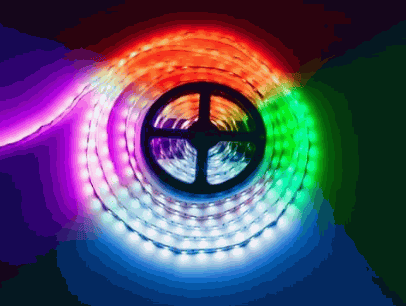
LED panels are flat lighting fixtures that provide uniform and diffused light, making them ideal for office spaces, schools, and commercial buildings. These panels offer a smart and modern lighting solution with energy-efficient performance.
LED panels are specifically designed to distribute light evenly across a space, eliminating harsh shadows and minimising eye strain. Their low glare feature makes them comfortable for extended use, perfect for environments where people spend long hours working or studying. Plus their functional benefits, LED panels also contribute to the aesthetic appeal of indoor settings, creating a clean and contemporary look. Their slim profile and versatility in terms of installation make them a popular choice for architects and interior designers seeking a seamless lighting solution.
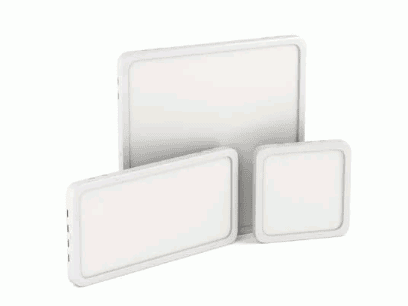
LED tubes are tube-shaped lighting solutions commonly used to replace fluorescent tubes in various settings like offices, warehouses, and retail spaces. These energy-efficient tubes offer superior brightness, longevity, and reduced maintenance costs.
LED tubes have revolutionised the lighting industry by significantly lowering energy consumption. Their extended lifespan not only reduces the frequency of replacements but also results in less waste generation, making them an environmentally friendly choice. The reduced maintenance costs translate into long-term financial savings for businesses. The bright and uniform light distribution provided by LED tubes enhances visibility and creates a more comfortable working environment for employees. Making the switch to LED tubes is a smart investment that pays off in multiple ways.
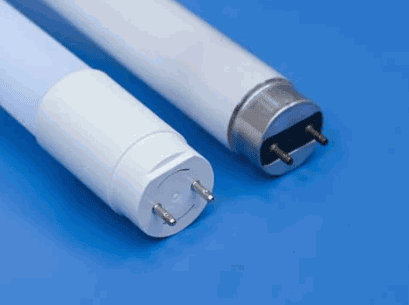
LED floodlights are powerful outdoor lighting fittings that emit wide beams of light, ideal for illuminating large areas such as building facades, sports fields, or car parks. These floodlights offer high-lumen output, durability, and directional lighting capabilities.
One of the key advantages of LED floodlights is their energy efficiency, helping to reduce electricity costs and environmental impact. Their long lifespan and low maintenance requirements make them a cost-effective lighting solution in the long term. LED technology allows for instant illumination without any warm-up time, perfect for applications where immediate lighting is essential.
Plus their performance benefits, LED floodlights are available in a variety of designs and sizes, catering to different outdoor lighting needs. Their ability to withstand harsh weather conditions, such as rain, snow, and extreme temperatures, makes them reliable options for outdoor use all year round.
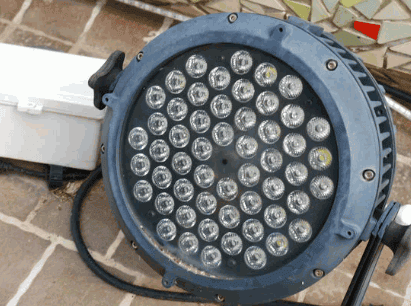
Selecting the appropriate LED lighting involves considerations such as determining your lighting needs, understanding colour temperature preferences, checking lumens and wattage for brightness levels, looking for Energy Star Certification for efficiency, and evaluating the cost and warranty benefits.
When choosing LED lighting products, it's crucial to take into account the light output to ensure it meets the required level for the intended space. Consider the colour quality of the light emitted, aiming for a natural and pleasing ambiance. Energy efficiency ratings, often displayed as lumens per watt, offer insight into how effectively the bulbs convert energy into visible light. Opting for Energy Star-certified products can lead to long-term cost-effectiveness due to energy savings. It's essential to balance upfront costs with long-term benefits to make a well-informed decision.
Begin by assessing your specific lighting requirements, considering factors such as the intended usage area, desired brightness levels, and the ambiance you wish to create with LED lighting. Illumination preferences play a crucial role in determining the suitable LED products for your space.
Understanding lighting needs goes beyond just selecting fixtures; it involves grasping the fundamental principles that can significantly impact the functionality and aesthetics of a space. Different lighting scenarios require various approaches, from task lighting for focused work areas to ambient lighting for relaxation zones. Additionally, colour rendering requirements should not be underestimated, as the accurate portrayal of colours enhances the overall look and feel of a room.
Colour temperature plays a significant role in setting the mood and ambience of a space.
By adjusting the Kelvin scale, you can create a warm and cosy atmosphere with lower Kelvin values or a bright and energising feel with higher values. Warm tones, typically ranging from 2000K to 3500K, evoke a sense of comfort and relaxation, ideal for living rooms or bedrooms. On the other hand, cool tones around 5000K to 6500K simulate daylight and help boost concentration, perfect for offices or task-oriented areas.
Consistency in colour temperature across different LED installations is crucial to maintain uniformity and avoid mismatched lighting effects throughout a space, ensuring a cohesive and harmonious visual experience.
Lumens and wattage are essential metrics to consider when selecting LED lighting. Understanding the lumen output helps determine the brightness level of the light fitting, while wattage indicates the energy consumption. Higher lumens typically translate to brighter light output.
It's crucial to match the lumens to the specific lighting task and environment to ensure optimal illumination. For instance, a workspace may require higher lumens for task lighting compared to ambient lighting in a living room. By choosing the right lumen output for each setting, you can achieve the desired lighting effect effectively.
Energy Star Certification serves as a reliable indicator of a product's energy efficiency and performance standards. Choosing LED lighting products with Energy Star Certification ensures greater energy savings, reduced environmental impact, and higher quality lighting solutions.
Plus the immediate benefits of reduced energy consumption and cost savings, Energy Star Certification plays a vital role in promoting sustainability in the lighting industry. By encouraging manufacturers to meet stringent efficiency criteria, Energy Star Certification drives innovation towards more eco-friendly lighting solutions.
Opting for certified LEDs not only benefits the consumer but also contributes to a healthier environment by reducing greenhouse gas emissions and overall energy usage. This conscious choice aligns with global efforts towards a greener future, making a positive impact on both individual households and the planet as a whole.
When selecting LED lighting, it's important to weigh the initial cost against long-term savings and benefits. Considering the total cost of ownership, including maintenance and energy expenses, as well as evaluating warranty coverage, ensures a cost-effective and reliable lighting investment.
One of the key advantages of assessing the cost-effectiveness and warranty terms of LED lighting products is that it gives you a comprehensive understanding of the financial implications of your purchase decision. By taking into account not just the upfront price but also the ongoing expenses related to maintenance and operation, you can make a more informed choice that aligns with your budget and sustainability goals.
Examining the warranty terms allows you to safeguard your investment. Quality LED solutions often come with extended warranty periods, providing you with peace of mind and protection against unexpected failures or defects.
